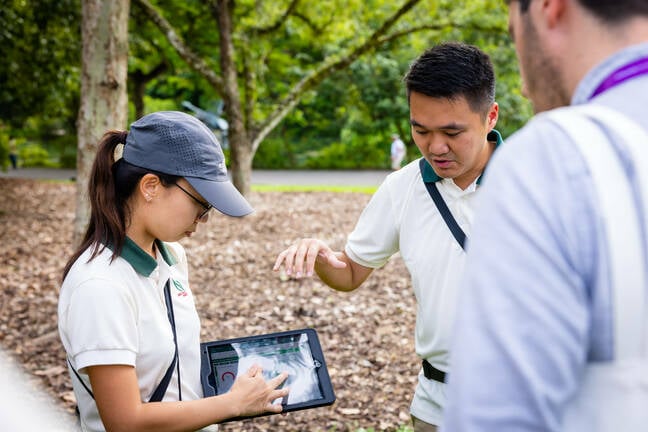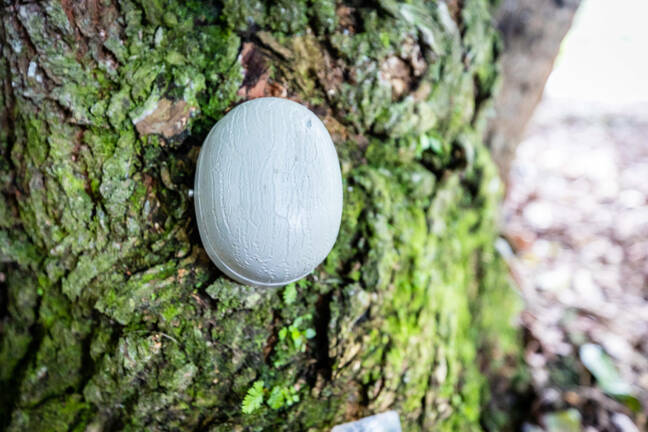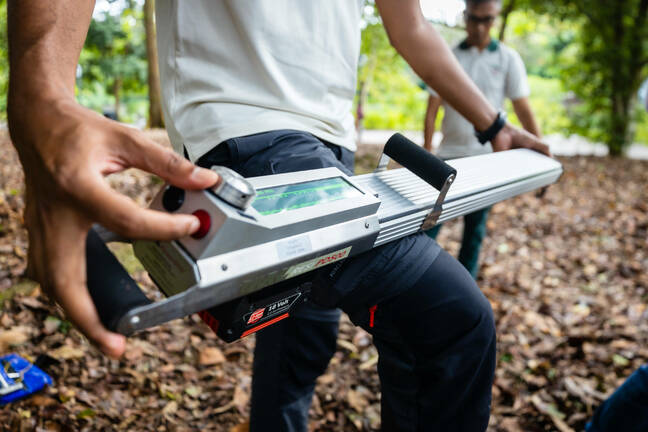This article is more than 1 year old
Singapore branches out onto internet of trees
LiDAR, AI and sensors manage millions of plants, and have greatly reduced accidents
Singapore is obsessed with trees. The island nation, population 5.45 million people, is home to around seven million trees – and manages many of them with an enormous Internet of Things monitoring scheme.
Which is a very Singaporean thing to do, because another local obsession is tracking everything. The city-state's goal of becoming a Smart Nation includes an increasingly comprehensive masterplan that uses tech to manage, link and track as many aspects of life as possible.
Singapore's National Parks Board (NParks) therefore tracks trees – around six million of them – once they reach a certain size, so that arborists can manage them with an app.
NParks CEO Tan Chong Lee told The Register the agency's team visits every one of the urban trees to check their stability on a regular basis, but the remote tree system – combined with other digital assessments – allows many other tree management tasks to be done from the comfort of an air conditioned office.
It's a handy option to have, given that Singapore's position near the equator means it stays in perpetual summer and daytime temperatures hover around 91°F (33°C). Unless it's raining, which it does an average of 167 days a year.
- At 9 for every 100 workers, robots are rife in Singapore – so we decided to visit them
- LiDAR in iPhones is not about better photos – it's about the future of low-cost augmented reality
- Reg scribe spends week being watched by government Bluetooth wristband, emerges to more surveillance
- Hear us out: Smartphone lidar can test blood, milk
Singapore manages trees by creating a digital twin – capturing LiDAR point clouds and then applying artificial intelligence to geolocate each plant.
"This actually takes away the manual efforts so that our staff don't have to go around to the hill to measure all the trees – this can be done automatically through this system," Tan told The Register.
NParks then applies finite element models to the digital twin to assist the team in examining the overall tree stability under different weather conditions (Singapore experiences fierce tropical storms), considering factors like tree architecture, wood strength and root space.
But the inspections don't stop there. The org uses satellite remote sensing for multi-spectral analysis to determine chlorophyll levels to ensure the trees are still thriving. It also integrates street level cameras that give panoramic imagery for remote visual checks, and attaches physical tilt sensors to more mature trees – to detect any sudden movement that could indicate risk.
If NParks is alerted to any problems, staff can act to improve a tree's structure or conduct further assessments to determine if the plant's life has run its course.
The high-tech tree analysis has been a long time in the making. Tan said the process started 20 years ago with geotagging the trees, and progressed as new technologies became available. Around five years ago, the geotagging of the trees began to be done through machine learning, thanks to a research project that was eventually put into practice. This means the tree inventory is now done automatically.
Five years ago another significant event happened in the NParks tree fleet. A 38-year-old woman died after being hit by a falling 270-year-old tembusu tree during a well-attended concert in the park with her family, infant in arms. The incident sticks in residents' memory as concert goers had rushed to remove the large tree.
According to a Botanic Gardens director's testimony at the subsequent inquest, the tree had been inspected twice a year and no visual defect had been found. It had, however been raining with strong winds for a week before the incident occurred. The woman's husband later sued NParks.
Death or injury by falling tree is certainly on the extreme end of the negative outcomes associated with unhealthy or unmanaged trees. Wayward trees are also able to destroy property, block roads and viaducts, or obscure signs.
"We track the number of tree incidents," Tan told The Register. He defined a tree incident as when a branch falls, or a tree trunk snaps or uproots.
Those incidents, said Tan, went from 3000 events a year at the turn of the century to fewer than five hundred a year today.
"There has been about an 85 percent decrease in the amount of tree incidents," said Tan. "And how we do this is to continuously improve our tree measuring process. And some of this is through the use of technology, such as 3D sensors that we mount to a tree to allow us to more preemptively take mediating measures."
Which is good news for Singaporeans looking for a safe arbor. ®



